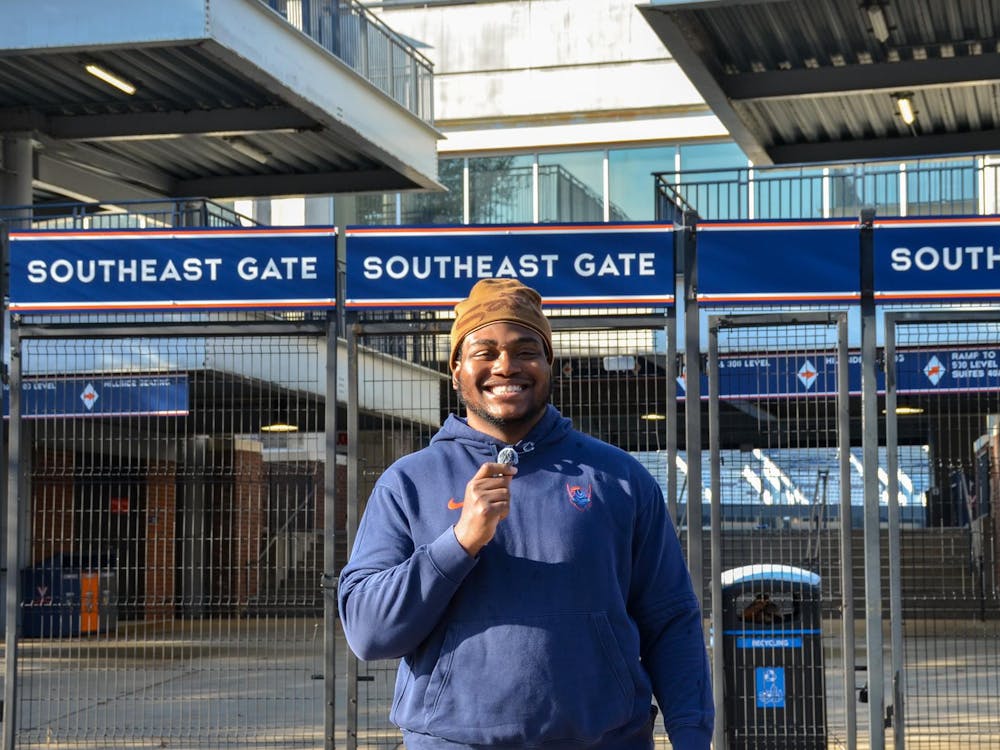From the earliest days of the University until today, the Academical Village has been and still is a consistent center of focus for all students who have walked these Grounds. Constant renovations and events remind us of the Lawn's importance.
However, every day many students walk past another University structure that was once the locus of much attention and remain completely unaware of its significance. The greatest memorial to the inception of the University athletics program, Lambeth Field and the Colonnades surrounding its bleachers, are now nothing more than a shadow of past heroics.
At the turn of this century, administrators perceived an inequity between the University and schools in the North. In an effort to become more like Ivy League schools, the University community created extra-curricular activities such as College Topics (now The Cavalier Daily), Corks and Curls, the Glee Club and of course, University athletics.
Constructed in stages from 1901 to 1913, Lambeth Field was the site of University football games until the construction of Scott Stadium in 1931. Baseball remained there until the early 1970s.
These early games were considered an extension of a bitter rivalry with the North that had raged since the Civil War, and thousands of students were always in attendance. For those who take their free admission into today's University sporting events for granted, be aware that the price of 1912 season tickets for students with a membership in the Athletic Association was a hefty $6.50.
The Doric Colonnades, with its red roof, provides a perfect interplay between the majesty of the ancient amphitheater and Jeffersonian flare. By combining these elements and styles, the Colonnades were on par with the facilities of the North, but still distinctly Virginian.
The stadium architect, R.E. Taylor, himself a University football hero, designed several other University structures, including Alderman Library.
On May 27, 1911, College Topics described the new facility as "the finest athletic stadium in the South, and one that compares very favorably with the stadiums at Syracuse and Harvard."
Dr. William A. Lambeth, for whom the Colonnades are named, oversaw the construction of Taylor's designs. In addition, Lambeth, a University Renaissance man, served as a professor of hygiene, director of athletics, Jefferson biographer and helped shape the rules of modern college football.
When the plans for the new stadium were introduced in 1896, a site was immediately chosen just north of Carr's Hill. Because of the natural fall of the landscape, there was less earth to be moved and the installation of the concrete seating was much easier.
Ironically, the very character of the site, which provided such immediate benefits, led to the structure's current state of disrepair. The stadium's natural fall creates a great drainage problem, and water rolling down from University Circle has undermined the seating and the columns.
About 10 years ago, the Board of Visitors, frustrated by the perpetually derelict state of the Colonnades, considered simply tearing it down.
The University community, however, protested.
In 1988, the University Guide Service held the first annual Colonnades Ball to raise money for the its restoration. It would take centuries of Virginia Reels, however, to raise the money for complete restoration of the stadium, which was estimated in 1995 at about $5 million.
As a form without a function, support for Lambeth Field and the Colonnades was scarce.
What then does the future hold for this wonderful piece of Cavalier lore?
The outlook is getting brighter. In May, when the Board passed a resolution to construct a new bicycle-friendly Grounds Walk from north Grounds around the Lambeth Field area and eventually beyond Scott Stadium, the Colonnades procured some allies in its struggle to survive.
"It's hard now to isolate the restoration of the Colonnades from the rest of the Grounds Walk construction," University Landscape Architect Mary Hughes said. "We can't construct the walk and have at its core a nuisance."
The next step is finding the funds. While this will be an ongoing process for several years, officials from Office of the University Architect said they are very optimistic about the backing thus far.
Regardless, those who appreciate the unparalleled beauty of the Grounds we walk upon everyday can be confident that steps are being taken in the right direction. The restoration crews have already begun reconstructing the steps and the columns have been repainted. The twelfth annual Colonnades Ball will be held Oct. 8.
The Colonnades "isn't something we want to lose," University Historian Raymond Bice said. "It does have a place in the University's history and in its heart"






